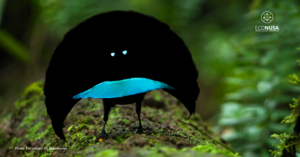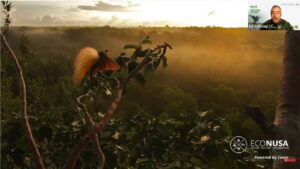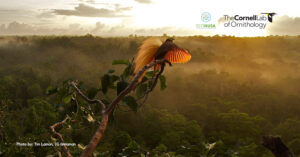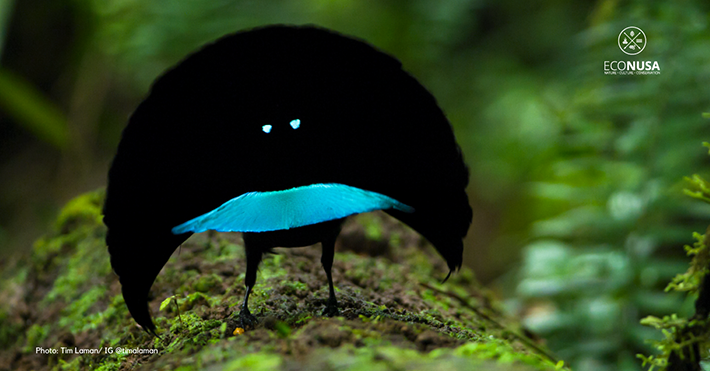
Cenderawasih (Birds-of-paradise) are not simply known for their exotic feathers and exquisite sounds, but also their mesmerizing display. This special behavior is part of the mating rituals of the so-called birds-of-paradise. Cenderawasih males lure their mates by performing spectacular dances and displays with their appealing feathers. The most interesting fact is that only male perform a seductive display.
Cenderawasih lures researchers and experts
The beauty and distinction of cenderawasih lure researchers and experts to explore their existence. In 2004, Tim Laman, a wildlife photographer and videographer, and Ed Scholes, an ornithologist of Cornell Lab of Ornithology, collaboratively conducted a research on cenderawasih through 18 expeditions in Tanah Papua, Maluku Island, Papua New Guinea and Australia. For 8 years, both have studied and documented thousands of photos and footages of 39 species of cenderawasih.
Ed Scholes told EcoNusa that one of the distinctions of Tanah Papua and Maluku Island is the existence of various kinds of birds that live there. “Papua is really an island of the birds. There’s just an incredible amount of bird diversity there and species that are not found anywhere else in the world. Not just the birds-of-paradise, but a lot of the other group of birds. These are things that are unique to Papua, and some cases in Maluku as well, than anywhere else in the world, or anywhere else in Indonesia,” he said.
Scholes also said that both regions have remarkable tropical rainforests that support the abundant biodiversity. “The Maluku Islands and Papua are some of the most biodiverse and rich habitats on earth. Most of which are not really found anywhere else on earth, not even other parts of Indonesia. They’re home to globally unique and famous species like the birds-of-paradise,” he added.
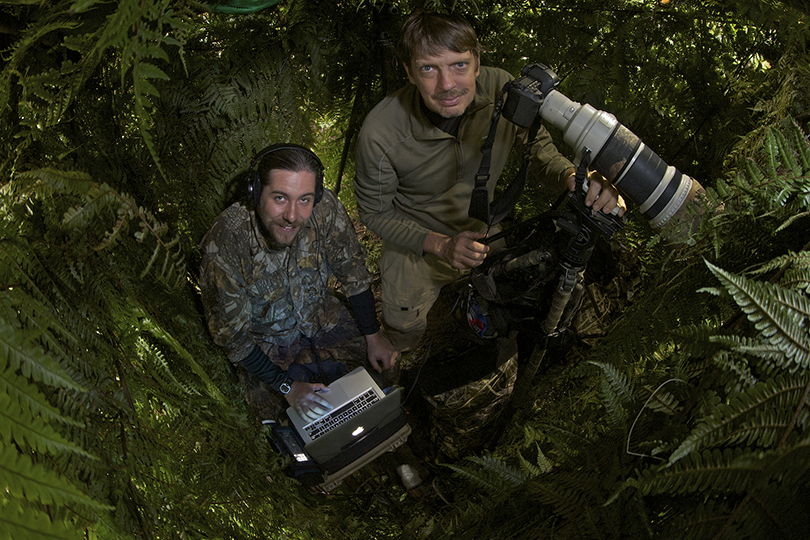
Each cenderawasih has special attraction and dance to appeal mate
Ed Scholes spent extensive time to conduct study on cenderawasih. When he met Tim Laman in 2003, Scholes was studying the Parotia genus to attain his professor degree. As to him, despite the great quantity of beautiful bird species, there is nothing more appealing, unique and spectacular than cenderawasih.“The way that they use those feathers for courtship display behaviors and the kinds of things that they do in the context of courtship display behavior just makes them a fascinating group,” said Scholes.
Read also: Conserving cenderawasih in Malaumkarta Raya
Every species has different behavior when they show off their appeal to female cenderawasih. For instance, Vogelkop Superb Bird-of-paradise. To attract a female bird, it will spread its special cape-like feathers from the hind neck as if it were a fan. Western Parotia or Cenderawasih Parotia Arfak will spread out its special part of its feather as if a ballerina’s skirt while dancing around. The Magnificent Riflebird will clap its widespread wings and invite the female to dance together.“So, some of them will display with their feathers wrapped around their upper body like the Vogelkop Superb Bird-of-paradise. Some of them will display on the grounds and have their plumage oriented up towards the female whose watching from above. Some of them will display high in the canopy with their plumages on display from all different angles just an incredible diversity of color, shape, form, and behavior,” said Scholes.
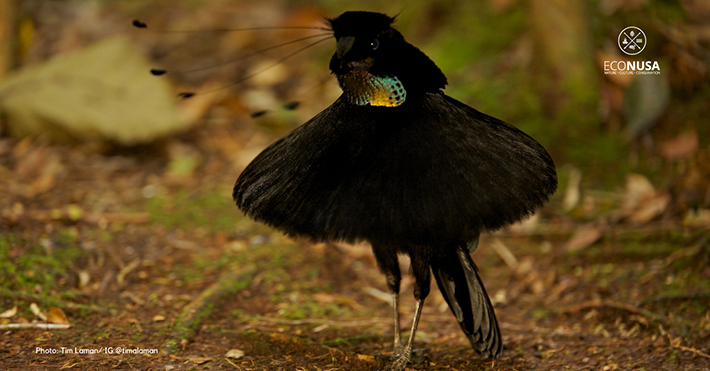
Cenderawasih dance, appealing subject for documentation
Upon documenting cenderawasih with Scholes, Tim Laman was so enthusiastic to know the difference between display behavior and physical characteristics of cenderawasih species. One of the most thought-provoking is the moment of documenting Vogelkop cenderawasih at Arfak mountain.
“I think out of all of the different species of birds of paradise that I filmed with Ed Scholes, one of the most exciting discoveries in filming project was filming the Vogelkop Superb Bird-of-paradise in the Arfak Mountains. We filmed the rare moment, the display of this bird for the first time,” he said. Laman admitted that it was the first time for him. Formerly they had never documented the display behavior of endemic species at Arfak.
Read also: Cenderawasih, a-Cultural Symbol and a Chain of Life in The Wilds of Papua and Maluku
“That’s very exciting and it’s now become a major attraction and highlight of the Arfak Mountains because they now are aware that they have unique bird-of-paradise there that is not found anywhere else,” he said.In addition to Vogelkop Superb Bird-of-paradise, Cenderawasih Kuning Besar (Greater Birds-of-paradise) at Aru Island, Maluku, has also attracted Tim Laman personally to capture it through his lens during the research. “That is a very spectacular species. Just incredibly colorful and display in the top of the canopy in the beautiful rainforest there,” said Laman.
As to Laman who works as a wildlife photographer and videographer, cenderawasih is the most diverse bird family in the world. Cenderawasih represents the diversity of species of one family. “There’s an incredible variety of colors, shapes, sizes, forms, displays. They’re just very fascinating. So, they’re just endlessly interesting subjects for photography,” he said.

Tim Laman and Ed Scholes call to defend forests, the bird of paradise’s dance floor
Life cycle of cenderawasih fully depends on forests. Forests serve also as, not only food and habitat, but also the dance floor of male birds to attract female partners. In other words, forests are important for reproduction and sustainability of cenderawasih species. When forests are gone, cenderawasih will also lose their habitat in which they get their food and their dance floor.
Scholes and Laman said that deforestation today has really put cenderawasih at risk in the future. Perhaps, there are still many forests remain today. But, sustainability of forests should be properly defended to keep the beauty of cenderawasih.
“The main message that I hope my work would convey is that the birds of paradise need forests to survive. And if we can protect their forests, then we also protect all the other rich biodiversity of Indonesia’s rainforests. I hope that people get it that it’s all about protecting the forests,” said Laman.
To date, with EcoNusa and Cornell Lab of Ornithology, Ed Scholes and Tim Laman called people to stand together to defend tropical rainforests in Tanah Papua and Maluku Island. Through the #defendingparadise campaign, both summoned the community to speak about forests sustainability as the effort to conserve cenderawasih.
Voice your support to rainforest as birds-of-paradise rainforests with Ed Scholes and Tim Laman at https://econusa.id/en/defendingparadise/
Editor: Leo Wahyudi


